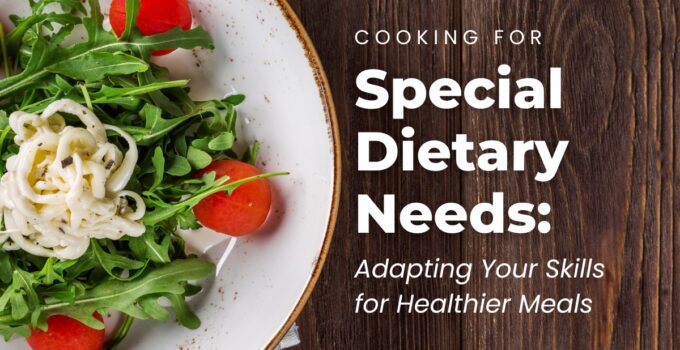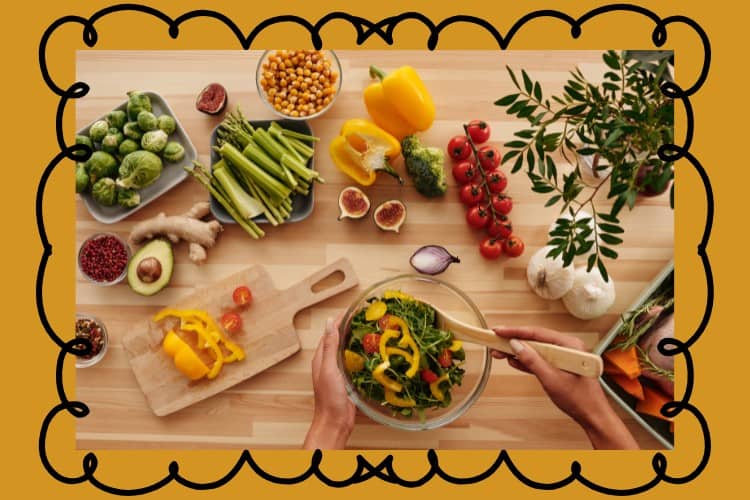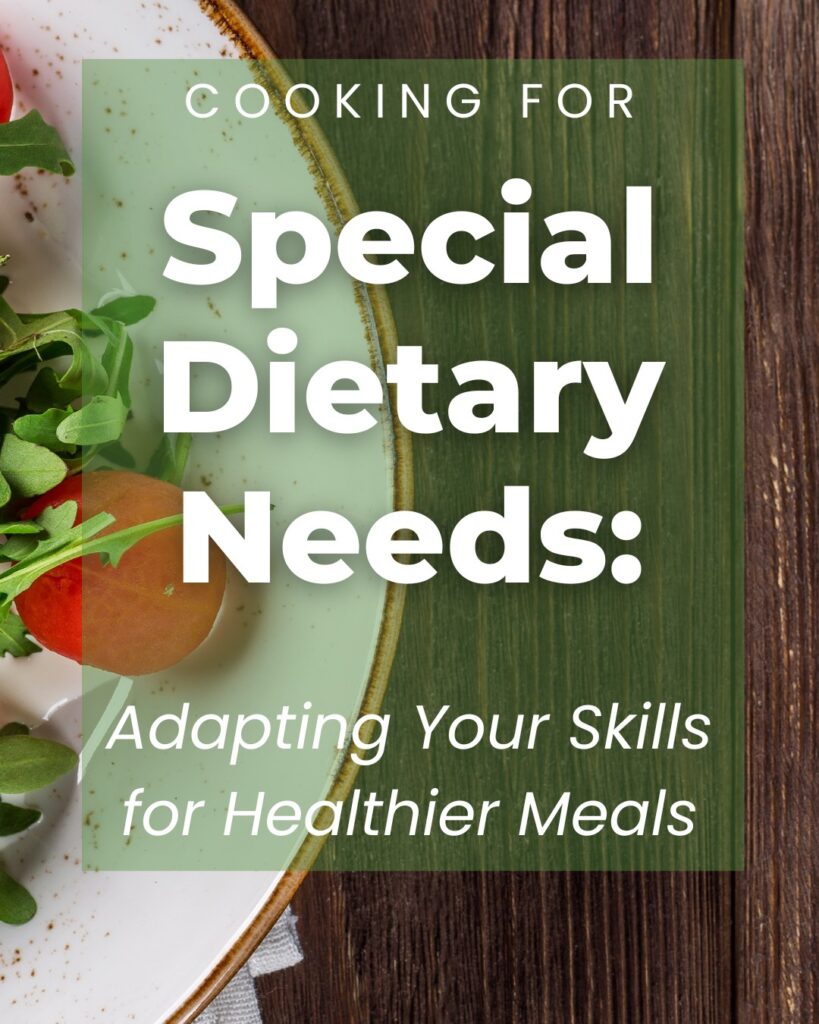Cooking for special dietary needs can feel challenging at first, but with the right knowledge and preparation, you can create delicious meals that meet specific health goals or lifestyle choices. Whether you’re cooking for allergies, sensitivities, or personal preferences, these essential strategies will help you thrive.
Understanding Special Dietary Needs: An Overview
Understanding special dietary needs is essential in today’s diverse culinary landscape. Special diets arise from various dietary restrictions that individuals may have due to health conditions, ethical beliefs, or personal preferences. Common food allergies, such as those to nuts, dairy, or shellfish, require careful consideration when preparing meals to avoid adverse reactions.
For those with gluten sensitivities or celiac disease, gluten-free cooking has become a necessity. This involves using alternative grains like quinoa or rice flour and ensuring that all ingredients are free from gluten contamination. Similarly, vegan cooking caters to individuals who abstain from animal products for health or ethical reasons and emphasizes plant-based ingredients.
Another popular special diet is the keto diet, which focuses on high-fat and low-carbohydrate foods to promote weight loss and improve metabolic health. Understanding these dietary needs not only helps in creating inclusive meal plans but also fosters a greater appreciation for the variety of food options available today. By acknowledging these special diets, we can ensure that everyone enjoys delicious meals tailored to their unique requirements.
Understanding Common Special Dietary Needs
- Gluten-Free: Avoid wheat, barley, rye, and products containing them. Use alternatives like rice, quinoa, almond flour, or certified gluten-free products.
- Dairy-Free: Substitute with plant-based options like almond milk, coconut milk, or oat-based creamers. Be mindful of hidden dairy in processed foods.
- Nut-Free: Carefully read labels and avoid tree nuts and peanuts. Choose seeds (like sunflower or pumpkin) as nutritious alternatives.
- Vegan: Exclude all animal products. Use legumes, tofu, tempeh, and vegetables to build meals.
- Low-Sodium: Limit processed foods. Flavor dishes with herbs, lemon juice, and spices instead of salt.
Identifying Key Dietary Restrictions and Their Impacts on Cooking
Understanding key dietary restrictions is essential for creating inclusive and health-conscious meals. Food intolerance, such as lactose intolerance, requires careful consideration when planning menus. For those affected, lactose-free meals are a necessity rather than a choice; thus, utilizing dairy alternatives like almond milk or coconut yogurt can help maintain flavor while ensuring comfort.
Nut allergies present another significant challenge in cooking. It is crucial to be vigilant about ingredients and cross-contamination to keep those with nut allergies safe. This means opting for nut-free recipes and being aware of hidden sources of nuts in processed foods.
A low-sodium diet is vital for individuals managing hypertension or heart conditions. Cooking methods that emphasize fresh herbs and spices instead of salt can enhance flavor without compromising health. Similarly, diabetic-friendly recipes focus on balancing carbohydrates with proteins and healthy fats, allowing for enjoyable meals that help regulate blood sugar levels.
By identifying these dietary restrictions and their impacts on cooking practices, chefs and home cooks alike can create diverse menus that cater to various needs while promoting overall well-being.
Essential Skills for Adapting Traditional Recipes to Meet Special Dietary Needs
Adapting traditional recipes to meet special dietary needs requires a solid understanding of recipe modification techniques. The first step is identifying which ingredients need to be substituted based on dietary restrictions, such as gluten-free or dairy-free requirements. Ingredient substitutions can include alternatives like using almond flour instead of wheat flour or coconut milk in place of regular milk, ensuring that the dish remains enjoyable while accommodating specific diets.
Sample Ingredient Swaps
- Butter → Olive oil or avocado oil
- Cream → Coconut milk or cashew cream
- Eggs → Flaxseed meal or chia seeds (1 tbsp + 3 tbsp water = 1 egg)
- Soy sauce → Coconut aminos or tamari (for gluten-free)
In addition to substitutions, mastering cooking techniques for special diets is crucial. For example, steaming vegetables instead of sautéing them in butter can create healthier options that cater to those avoiding certain fats. Flavor enhancement without allergens can be achieved through the use of herbs and spices rather than relying on common allergens like nuts or dairy-based flavorings. By employing these strategies, home cooks can successfully modify their favorite traditional recipes while still delivering delicious and satisfying meals for everyone at the table.
Flavor Without Compromise
- Herbs & Spices: Use fresh or dried herbs (like basil, cumin, turmeric) to add depth and interest.
- Citrus & Vinegars: Add brightness and tang without extra salt or fat.
- Umami Builders: Use mushrooms, roasted vegetables, or miso (where appropriate) to create richness.
The Importance of Meal Planning and Ingredient Sourcing
Meal planning and ingredient sourcing play a crucial role in maintaining a healthy diet, especially for those with special dietary needs. Meal prepping for special diets not only saves time during busy weekdays but also ensures that individuals adhere to their nutritional requirements. By taking the time to plan meals ahead, one can avoid last-minute unhealthy choices and stay committed to health goals.
Finding gluten-free alternatives is essential for those with celiac disease or gluten sensitivity. Many grocery stores now offer a variety of gluten-free products, but it’s important to read labels carefully to avoid cross-contamination. Additionally, exploring local markets can uncover fresh, naturally gluten-free ingredients such as fruits, vegetables, and lean proteins.
When shopping for allergy-safe ingredients, having a list is vital. Shopping tips include checking the allergen information on packaging and opting for whole foods whenever possible. This not only minimizes the risk of allergens but also promotes overall health by incorporating nutrient-dense options into meals. By prioritizing meal planning and informed ingredient sourcing, individuals can successfully navigate their special dietary needs while enjoying delicious and satisfying meals.
Cooking Techniques to Enhance Flavor and Nutrition in Specialized Meals
When it comes to preparing specialized meals, employing healthy cooking methods is crucial for maximizing both flavor and nutrition. Techniques such as steaming, grilling, and roasting not only help retain the nutrients in your ingredients but also enhance their natural flavors without the need for excessive seasoning.
For those looking to season dishes without relying on salt or common allergens, consider using herbs and spices like garlic powder, cumin, or smoked paprika. These options can elevate your meals significantly while keeping them safe for various dietary restrictions. Additionally, incorporating nutrient-dense ingredients such as quinoa, leafy greens, and legumes can provide essential vitamins and minerals that contribute to overall health.
By focusing on these cooking techniques and ingredient choices, you can create delicious meals that are both satisfying and nourishing. Embracing this approach not only benefits your health but also opens up a world of culinary creativity that respects dietary needs.
Tips and Resources for Continually Improving Your Cooking Skills
Improving your cooking skills, especially when catering to special dietary needs, can be both rewarding and challenging. To help you on this journey, here are some valuable tips and resources.
First, consider enrolling in cooking classes online specifically designed for special diets. Many platforms offer courses that focus on gluten-free, vegan, or other dietary adaptations. These classes not only teach you techniques but also provide insights into ingredient substitutions that maintain flavor and nutrition.
Additionally, investing in cookbooks that address dietary needs is essential. Look for titles that emphasize adaptations for various conditions or preferences. These cookbooks often include helpful tips on meal planning and ingredient sourcing tailored to specific diets.
Lastly, explore websites and blogs dedicated to special dietary needs cooking. Many of these resources feature recipes, cooking tips, and community support from individuals who share similar dietary challenges. Engaging with these platforms can inspire new ideas and foster a sense of connection as you navigate your culinary journey.
By leveraging these resources—online classes, specialized cookbooks, and dedicated websites—you can continually enhance your cooking skills while ensuring that your meals meet specific dietary requirements.
Conclusion: Embrace the Challenge of Cooking for Special Dietary Needs to Create Delicious & Inclusive Meals!
Embracing the challenge of cooking for special dietary needs is not just about accommodating restrictions; it’s an opportunity to expand your culinary skills and create inclusive meals that everyone can enjoy. By understanding the various dietary requirements you can explore new ingredients and techniques that may have previously been outside your comfort zone.
Experimenting with alternative flours, plant-based proteins, and creative flavor combinations can lead to surprisingly delicious outcomes. Additionally, being mindful of cross-contamination and food preparation methods ensures that all diners feel safe and included at the table.
Ultimately, cooking for special dietary needs encourages a more thoughtful approach to meal planning. It fosters a sense of community as you share meals that cater to diverse preferences while still being flavorful and satisfying. So take on this challenge with enthusiasm; it will not only enhance your repertoire but also bring joy to those who gather around your table.
A Life on the Farm is beginning a series of informational and instructional posts concerning various aspects of the much needed cooking skills we are talking about. Be sure to join our community and come back for that and more!
MORE WAYS TO CONNECT
We also, as a homesteading family, have a variety of blogs that might interest you. A Life on the Farm focuses on the more personal side of the homesteading life. We discuss subjects like family, parenting, relationships, homeschooling, cooking, canning and so much more.
Two Oaks Farm Talk concerns the more technical side of homesteading. We discuss subjects like gardening, food prep, and farm building and construction with lots of tutorials!
Farm Raised Family is basically a hub for everything under the Two Oaks Farmstead umbrella. You can learn a great deal about all parts of the farmstead there. The Farm Raised Family blog focuses on financial matters such as budgeting, saving, and more and on current events affecting families.
You can also have a more in depth look at all that we do by visiting our Two Oaks Farmstead YouTube Channel and be sure to subscribe so that you don’t miss a thing!
Farm Life and Freedom is the new podcast we are in the process of launching! It is going to be so much fun! You could also check in with our Farm Life and Freedom Youtube Channel.
Two Oaks Farmstead is the farm store… the one that holds the umbrella! Check us all out and join us, not only on our blogs and Farm Life and Freedom podcast but come join the fun on Facebook, Instagram, Twitter… wherever you get social!










